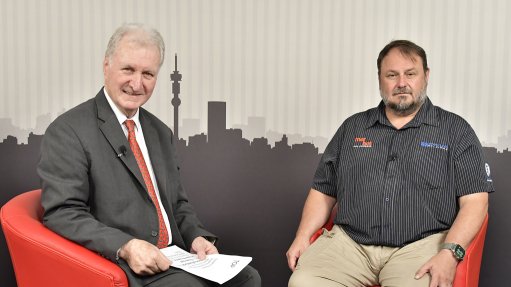Report suggests 10% reuse of plastics will halve such ocean-going litter
A key finding of the ‘Future of Reusable Consumption Model’ report suggests that it is possible to prevent almost half of yearly plastic ocean waste by reusing just 10% of all plastics consumed, as an integral part of the reduce-reuse-recycle agenda.
The report – a collaboration between public-private cooperation organisation the World Economic Forum (WEF) and management consulting firm Kearney – suggests that shifting from the single use of plastic products, towards a reuse model can help society regain ground in the fight against plastic waste.
The report points out that, currently, 50% of global plastic production is destined for single-use applications, while only 14% of global plastic packaging is collected for recycling.
The reuse model involves consumer items being designed to be used several times, generating added value across the economy.
The findings of the report are based on proposals by governments and nongovernmental organisations around the world, as well as research conducted with senior leaders from the private and public sectors.
DIFFERENT SCENARIOS
The report lists three scenarios that suggest how much plastic waste could be reduced from ocean and landfills if a reuse model is used.
Scenario one involves between 10% and 20% of plastic packaging being reusable by 2030, equating to seven-million to 13-million tonnes of plastic packaging, representing between 45% and 90% of yearly plastic ocean waste.
In Scenario two, reusable plastics make up between 20% and 40% of packaging, equivalent to between 90% and 185% of yearly plastic ocean waste, or between 25% and 50% of plastic landfill waste.
Scenario three involves between 40% to 70% of all packaging being reusable, equating to anywhere from 185% to 320% of yearly plastic ocean waste, or between 50% and 85% of plastic landfill waste.
WEF consumer industries and consumption head Zara Ingilizian says that, although the shift from disposable consumer goods to reusables is still in its early stages, there are already signs of progress.
“Just as recycling and composting were once considered eccentric and electric cars were written off as science fiction, when it comes to sustainability, attitudes about just what is viable are changing rapidly.”
She adds that the reuse model “may well prove to be among the most potent manifestations of that shift”.
Kearney partner and global social impact and sustainability project leader Beth Bovis says a shift from “merely treating or handling” waste, to simply never creating it in the first place is needed.
However, she says that any shift towards reusable consumer goods will depend on the choices and actions of the three driving forces of economies – consumers, the private sector and the public sector.
“Each of these groups has a unique role to play in making reuse a reality. The need for a more reuse-centred economic model is urgent and grows more so with each passing year. It is up to all stakeholders to answer the call.”
WEF Consumers Beyond Disposability initiative Future of Consumption Platform head Mayuri Ghosh says that, when discussing the three scenarios, it is worth emphasising that any of these would represent “extremely valuable” progress over the present status quo.
“The plastic waste challenge has grown too large for us to simply recycle our way out of,” she adds.
Further, Ghosh says that, with no global agreement over an ambition level to target plastic waste, the sooner people can make systemic and meaningful advance towards reuse, the better.
Article Enquiry
Email Article
Save Article
Feedback
To advertise email advertising@creamermedia.co.za or click here
Comments
Press Office
Announcements
What's On
Subscribe to improve your user experience...
Option 1 (equivalent of R125 a month):
Receive a weekly copy of Creamer Media's Engineering News & Mining Weekly magazine
(print copy for those in South Africa and e-magazine for those outside of South Africa)
Receive daily email newsletters
Access to full search results
Access archive of magazine back copies
Access to Projects in Progress
Access to ONE Research Report of your choice in PDF format
Option 2 (equivalent of R375 a month):
All benefits from Option 1
PLUS
Access to Creamer Media's Research Channel Africa for ALL Research Reports, in PDF format, on various industrial and mining sectors
including Electricity; Water; Energy Transition; Hydrogen; Roads, Rail and Ports; Coal; Gold; Platinum; Battery Metals; etc.
Already a subscriber?
Forgotten your password?
Receive weekly copy of Creamer Media's Engineering News & Mining Weekly magazine (print copy for those in South Africa and e-magazine for those outside of South Africa)
➕
Recieve daily email newsletters
➕
Access to full search results
➕
Access archive of magazine back copies
➕
Access to Projects in Progress
➕
Access to ONE Research Report of your choice in PDF format
RESEARCH CHANNEL AFRICA
R4500 (equivalent of R375 a month)
SUBSCRIBEAll benefits from Option 1
➕
Access to Creamer Media's Research Channel Africa for ALL Research Reports on various industrial and mining sectors, in PDF format, including on:
Electricity
➕
Water
➕
Energy Transition
➕
Hydrogen
➕
Roads, Rail and Ports
➕
Coal
➕
Gold
➕
Platinum
➕
Battery Metals
➕
etc.
Receive all benefits from Option 1 or Option 2 delivered to numerous people at your company
➕
Multiple User names and Passwords for simultaneous log-ins
➕
Intranet integration access to all in your organisation


















